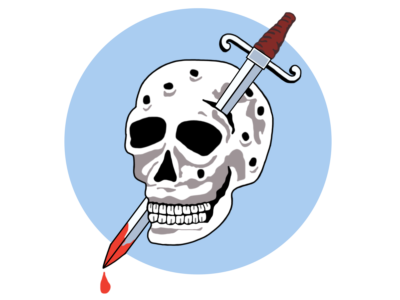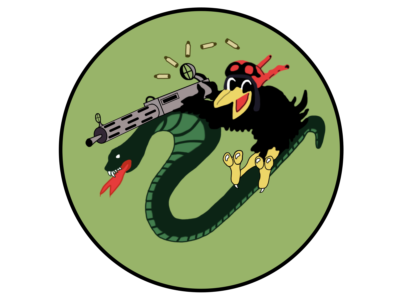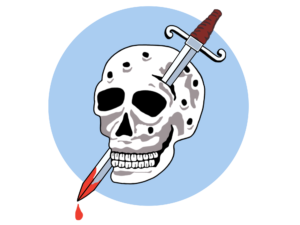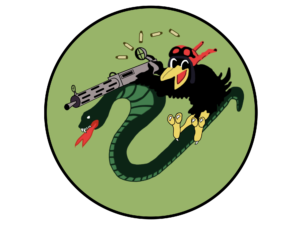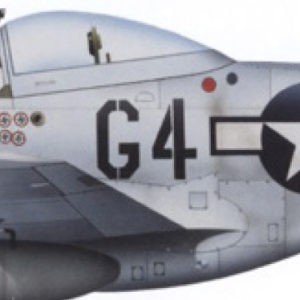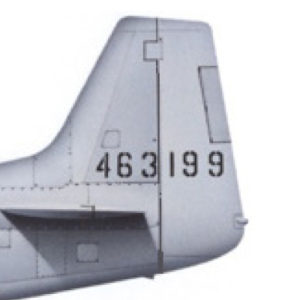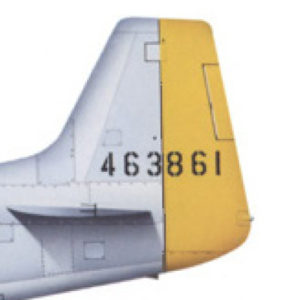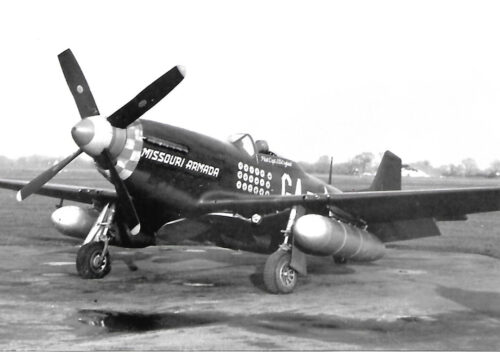
Over the course of World War II the U.S Army Air Forces activated 114 fighter groups. Among these fighter groups, a select few stood out as elite units. The 357th Fighter Group held one of these outstanding combat records, in just over a year of combat 42 pilots would achieve ‘acedom’. Nicknamed “The Yoxford Boys” after a village near their base in Leiston, UK, the 357th boasted the most air-to-air combat victories of any P-51 group in the Eighth Air Force and third among all groups fighting in Europe. Holding the title as the first P-51 Fighter Group of the Eighth Air Force, the group flew 313 combat mission between February 11th, 1944 and April 25th, 1945.
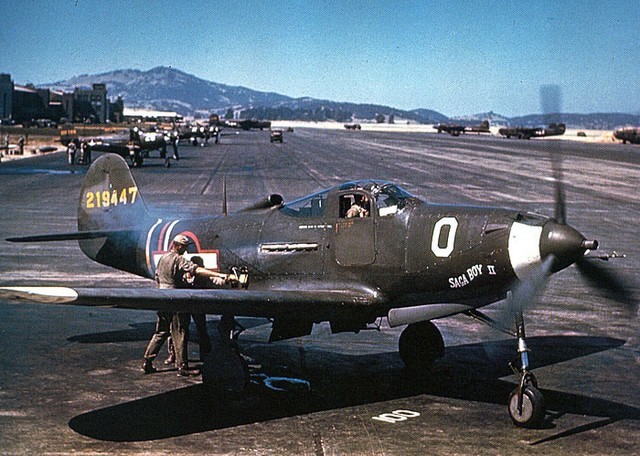
The 357th Fighter Group training at Hamilton Army Airfield in their Bell P-39Q Airacobra.
On December 16th, 1942 the group was activated at Hamilton Field, California. Besides a few veterans, all pilots and personnel were fresh out of Air Force schools. After transfering to multiple bases across the country for different phases of training in the P-39 Airacobra, on October 24th, 1943, 10 months after being created, the 357th Fighter Wing was cleared for combat. During their training period, 14 men had died from accidents.
November 3rd, 1943 the 357th started their trek for Europe and on November 30th they moved into Raydon Wood airfield, in Suffolk under the Ninth Air Force. While the group was busy training on their few available North American P-51B Mustangs, the U.S. Air Force realized the need for a long escort fighter and the Mustang fit the bill. On February 1st, 1944 the decision was made to make the Mustang the aircraft of choice for the Eighth Air Force. The 357th was not only re-assigned to the Mighty Eighth but also moved to Station F-373 (RAF Leiston airfield) which was located between the Suffolk towns of Leiston, Saxmundham and Theberton, where they would remain for the remainder of the war. From this base, on February 11th, the 357th FG flew its first official mission in the form of a sweep to the Rouren area, led by ace and recent Medal of Honor recipient Maj James Howard of the 354th FG.
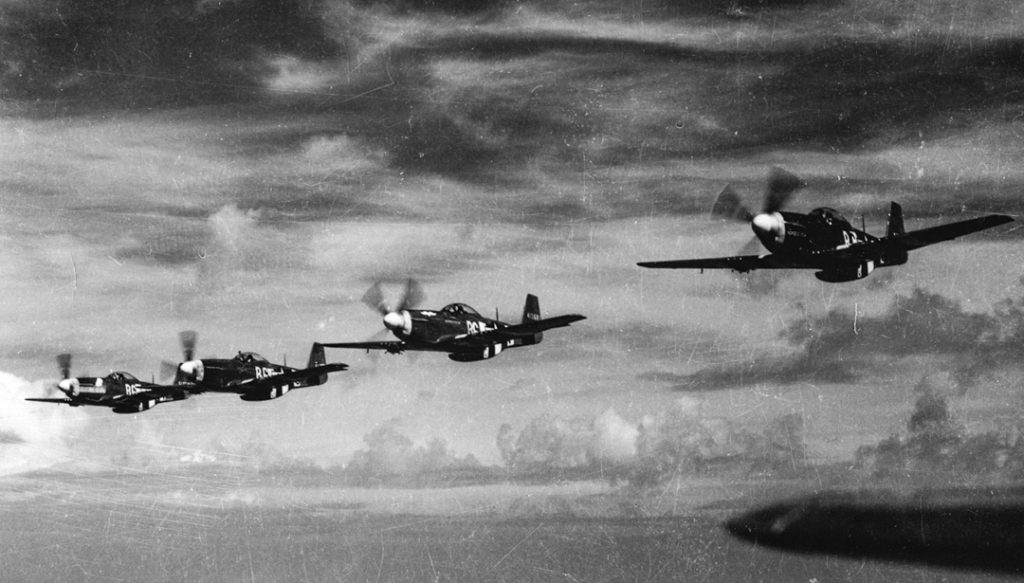
Four P-51 Mustangs of the 363rd Fighter Squadron
The groups main role in the air war was to escort of heavy bombers, mainly B-17’s and B-24’s. These escort missions led to the creation of some untouched records by the Eighth Air Force. After the group’s first aerial victory on February 20th, 1944, downing a Me 109 by 1st Lieutenant Calvert L. Williams, 362nd Fighter Squadron, flying a P-51B (G4-U, serial number 43-6448) nicknamed “Wee Willie”, the floodgates were opened for the 357th. These 313 missions resulted in 595.5 German airplanes destroyed in the air and 106.5 destroyed on the ground for a total of 702 victories. The 357th had 42 pilots become aces, the most of any European Theater of Operations fighter group.
362nd Squadron
363rd Squadron
364th Squadron
362nd Squadron
363rd Squadron
364th Squadron
The 357th distinguished themselves from those of other Eighth Air Force groups by holding on to the olive drab paint scheme for most of the war. Initially all P-51’s arrived finished in a factory-applied olive drab with gray lower surfaces. However, even after a USAAF policy change that ended this specification on February 13th, 1944, the 357th FG kept the scheme going by field-applying their famed camouflage.
Early in ‘44, the 66th Fighter Wing assigned its five groups their own individual colored spinner and checkerboard pattern along with a two-letter squadron identification code. The 357th’s group nose colors were red and yellow. To accompany the squadron codes, each aircraft was also given its own letter identifiers. In late 1944, the 357th dropped their olive drab color scheme and assigned its three squadrons a color to be painted on their rudder for identification.
362nd Squadron
363rd Squadron
364th Squadron
362nd Squadron
363rd Squadron
364th Squadron
362nd Squadron
363rd Squadron
364th Squadron
362nd Squadron
363rd Squadron
364th Squadron
HISTORIC PICTURES
A look back in the past of real pictures of the 357th and their everyday operations and missions.
Raydon
Leiston
| Pilot | Squadron | Credits | Casualty Status | Aircraft Flown |
| Major Leonard K. “Kit” Carson | 362nd | 18.5 | Nooky Booky and three successors | |
| Major John B. England | 362nd | 17.5 | U’ve Had It, Missouri Armada | |
| Major Clarence E. “Bud” Anderson | 363rd | 16.25 | Old Crow | |
| Major Richard A. “Pete” Peterson | 364th | 15.5 | Hurry Home Honey | |
| Major Robert W. Foy | 363rd-Grp | 15 | Reluctant Rebel, Little Shrimp | |
| Major Donald H. Bochkay | 363rd | 13.75 | Speedball Alice, Alice in Wonderland | |
| 1st Lt John A. Kirla | 362nd | 11.5 | Spook | |
| Capt. Charles E. “Chuck” Yeager | 363rd | 11.5 | Glamorous Glen and two successors | |
| Lt Col John A. Storch | 364th | 10.5 | The Shillelagh | |
| Capt Fletcher E. Adams | 362nd | 9 | KIA May 30th, 1944 |
Southern Belle |
| Lt Col Thomas L. “Jack” Hayes | Group | 8.5 | Frenesi | |
| 2d Lt Otto D. “Dittie” Jenkins | 362nd | 8.5 | Died Flying Accident
March 24th, 1945 |
Floogie, Toolin’ Tool, Toolin’ Fool’s Revenge |
| Major Joseph E. Broadhead | 362nd | 8 | Baby Mike, Master Mike | |
| 1st Lt Robert M. Shaw | 364th | 8 | ||
| Capt John L. Sublett | 362nd | 8 | Lady Ovella | |
| Capt Charles E. Weaver | 362nd | 8 | Passion Wagon | |
| 1st Lt Dale E. Karger | 364th | 7.5 | Karger’s Dollie, Cathy Mae II | |
| Capt Glendon V. Davis | 364th | 7.5 | Pregnant Polecat | |
| Capt Robert H. Becker | 362nd | 7 | Sebastian, Sebastian, Jr. | |
| Capt James W. Browning | 363rd | 7 | KIA February 9th, 1945 |
Gentleman Jim and two successors |
| 1st Lt John B. Carder | 364th | 7 | POW May 12th, 1944 |
Taxpayer’s Delight |
| 1st Lt Gilbert M. O’Brien | 362nd | 7 | Shanty Irish | |
| 1st Lt Joseph F. Pierce | 363rd | 7 | KIA May 21st, 1944 |
|
| 1st Lt Gerald E. Tyler | 364th | 7 | Little Duckfoot | |
| Lt Col Andrew J. Evans | Group | 6 | Little Sweetie and three successors | |
| Capt. Alva C. Murphy | 362nd | 6 | KIA March 2nd, 1945 |
Bite Me |
| Capt William R. O’Brien | 363rd | 6 | Billy’s Bitch | |
| Capt. John F. Pugh | 362nd | 6 | Geronimo | |
| Major Arval J. Roberson | 362nd | 6 | Passion Wagon | |
| Capt. Robert G. Schimanski | 364th | 6 | Anne Lou | |
| 2d Lt Frank L. Gailer | 363rd | 5.5 | POW November 27th, 1944 |
Expectant, Jeesil Peesil Mommy |
| Capt. Paul R. “Shorty” Hatala | 364th | 5.5 | Jeanne, Nellie Jean | |
| 1st Lt LeRoy A. Ruder | 364th | 5.5 | KIA June 6th, 1944 |
Linda Lu |
| 1st Lt Robert P. Winks | 364th | 5.5 | Trusty Rusty | |
| Capt Raymond M. Bank | 364th | 5 | POW March 2nd, 1945 |
Fire Ball |
| Lt Col Irwin H. Dregne | Group | 5 | Bobby Jeanne / Ah Fung-Goo | |
| Capt Thomas L. “Little Red” Harris | 364th | 5 | POW May 22nd, 1944 |
L’il Red’s Rocket |
| Major Edwin W. Hiro | 363rd | 5 | KIA September 18th, 1944 |
Horses Itch |
| Capt Chester K. Maxwell | 364th | 5 | Lady Esther | |
| 1st Lt William C. Reese | 364th | 5 | KIA May 21st, 1944 |
Bear River Betsy |
| 1st Lt Morris A. Stanley | 364th | 5 | ||
| Capt. Jack R. “Walrus” Warren | 364th | 5 | MIA March 18th, 1944 |
|
| Major Raymond Matt Bank | 364th | 5 | Fireball |
SOURCE: USAF Historical Study 85: USAF Credits for Destruction of Enemy Aircraft, World War II. Office of Air Force History, AFHRA, 624, 629, 631, 633. Retrieved 14 October 2006.


